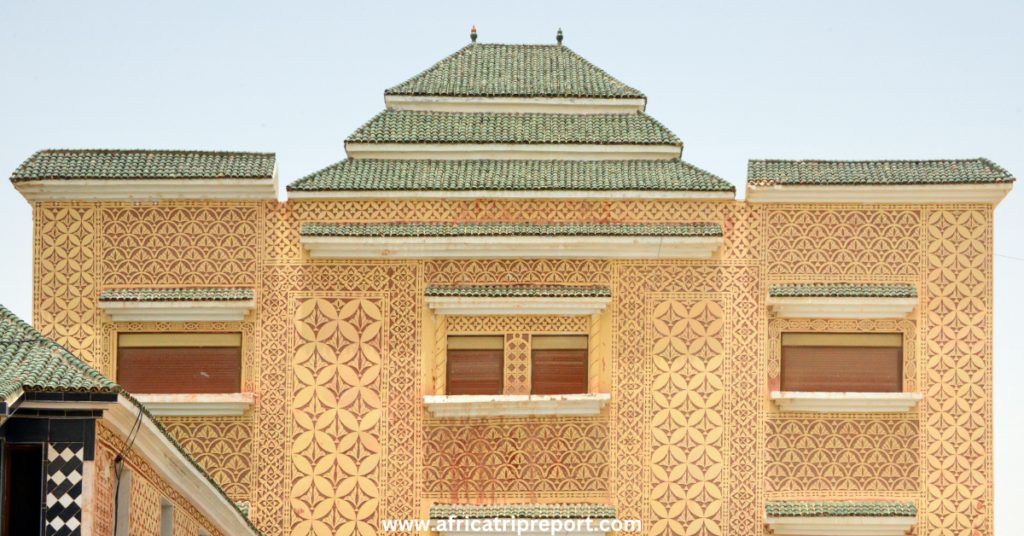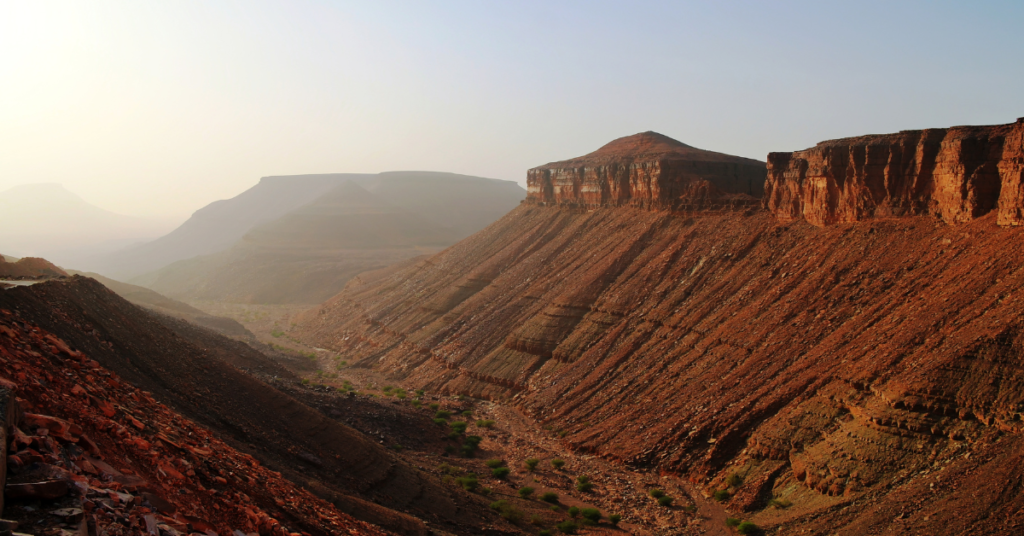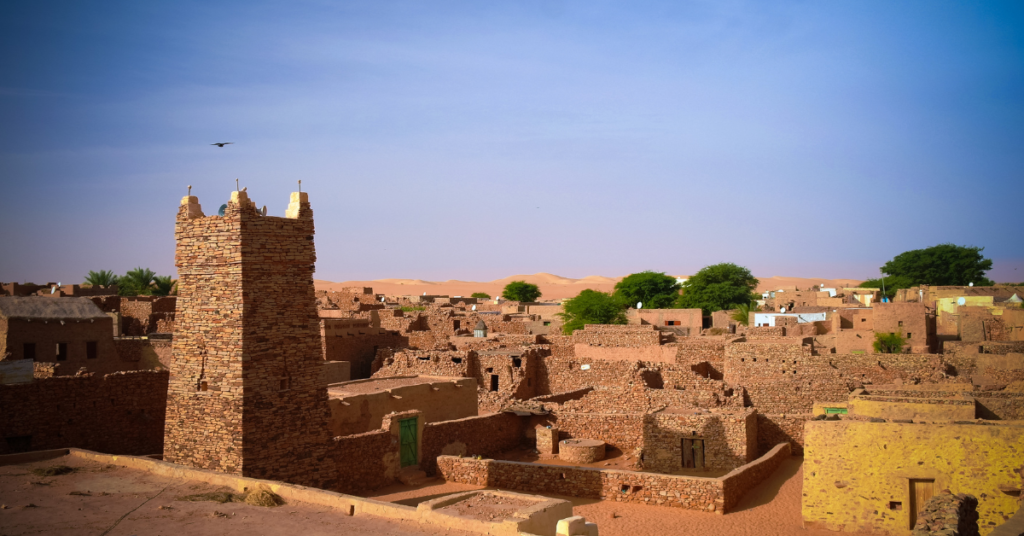Are you dreaming of a trip to Mauritania but feeling overwhelmed by all the possibilities? No worries, I’ve got you covered!
I’m eager to share my ideal Mauritania itinerary with you after my excellent experience in this wonderful country. This is your chance to spend a week seeing the best of the nation.
Ready to explore the coolest spots, indulge in local cuisine, and meet amazing people? From must-see sights to off-the-beaten-path gems, my itinerary covers everything you need to know to have a blast in Mauritania.
A Week In Mauritania Itinerary
Mauritania is a treasure trove of incredible experiences just waiting for you! From stunning landscapes to vibrant culture and fascinating history, this country has it all.
Sure, you could easily spend more than a week exploring every corner of Mauritania and soaking up all the awesomeness it has to offer. But, as with any trip, costs can add up, and a week can be a perfect amount of time to enjoy the country without breaking the bank.
So, let’s make the most of this week and dive headfirst into everything Mauritania has to offer! With my tips and recommendations, we’ll create memories that will last a lifetime. Get ready for a wild adventure!
Day 1: Nouakchott
Okay, hear me out: Nouakchott may not be the most glamorous capital in the world, but that’s what makes it so darn intriguing! It’s not your typical polished and shiny city, but it has a certain charm that you just can’t find anywhere else.
Sure, there’s sand everywhere you look, and the city may not be bursting with trendy bars and gourmet restaurants, but that’s all part of its quirky appeal. Where else can you find a pile of actual desert sand smack dab in the middle of a capital city? Only in Nouakchott, my friend!

And if that wasn’t enough to pique your interest, there are three must-see cultural sites that are sure to make your trip to Mauritania extra special!
- First up, we have the Port du Pêche, a bustling and lively fishing harbor that’s not only an important part of Mauritania’s economy, but also a fascinating spot to people-watch and soak up the local atmosphere. Don’t believe me? Check out this awesome photo essay from Off Beat Traveling!
- And if you’re a fan of all things quirky and unique, you absolutely cannot miss the Camel Market. Trust me, it’s exactly what it sounds like – a bustling marketplace with the largest concentration of camels you’ve ever laid eyes on. It’s a sight to behold, and one you won’t soon forget!
- The Mauritania National Museum. It sits in the center of the city and provides a fascinating insight at the history and culture of the nation. Traditional Mauritanian artwork, historic artifacts, and exhibits on the nation’s nomadic cultures are among the museum’s offerings. If you’re curious to learn more about Mauritania and its fascinating history, you should definitely pay it a visit.
How To Get To Terjit: To get to Terjit from Nouakchott, hop on a bus! You can usually find buses leaving at 8am or 3pm from the main towns and cities. It’s a budget-friendly option at 500MRU and takes about 6 hours. Don’t be surprised if you make a few stops along the way to pray, go through police controls, grab a snack, or stretch your legs.
Day 2: Terjit
Terjit is a hidden gem in the middle of the desert, and it’s no wonder why it’s a must-see for anyone visiting Mauritania! This desert oasis, located 45km south of Atar in the Adrar region, has been a haven for travelers for centuries, offering a peaceful respite from the hot and dusty desert.
But don’t be misled—Terjit is more than just a stopover; it’s a destination in and of itself! It is simple to understand why travelers and locals alike rush to this area to escape the hustle and bustle of daily life with its gorgeous palm trees, spectacular scenery, and breathtaking views.

How To Get To Chinguetti: First, hop in a taxi from Terjit to Atar for a reasonable price of 1,000 MRU. It’s a bit of a drive at almost two hours, but the stunning scenery is worth it. Once you arrive in Atar, you can catch a pick-up truck to Chinguetti for only 200 MRU. Keep in mind, there are only a couple of these pick-ups per day, so plan accordingly.
Day 3: Chinguetti
Chinguetti is a hidden gem that sadly doesn’t receive as many tourists as it should. It’s a medieval city founded in the 13th century, and it used to be a hub for the trans-Saharan trading route, just like Samarkand in Uzbekistan was on the Silk Road.
Back in the day, Chinguetti was an important meeting point for Maghrebi pilgrims on their way to Mecca, making it one of the holiest cities in West Africa. It’s now a well-known center for Islamic and scientific scholarship, with ancient libraries containing precious books and manuscripts on astronomy, mathematics, medicine, and Islam.

When exploring the charming old city alleys, be prepared to be chased by ladies selling costume jewelry, which is a sure sign that tourists are welcomed with open arms.
Read More: How To Get To Chinguetti?
Day 4: Chuom
Wow, get ready for an unforgettable adventure in Mauritania – the Iron Ore Train! In my opinion, this is one of the most exciting things you can do in the country. Imagine crossing part of the Sahara desert sitting on top of an iron ore pile, it’s a bit crazy, but totally worth it. Trust me, this experience will stay with you forever.
To catch the train, head to Chuom, where it passes on its way to Noadibou. It’s a unique opportunity to witness the impressive scale of the mining industry in Mauritania while enjoying breathtaking views of the desert landscape. Don’t miss this opportunity to embark on an adventure of a lifetime!
Get ready for a wild ride in Chuom, where the Iron Ore Train is expected to roll through at 6 pm…well, at least that’s what they say! In reality, it’s quite rare for the train to be on time, so don’t be shocked if you end up waiting for 10, 20, or even more hours.
Day 5: Iron Ore Train
Get ready for a wild ride on the Iron Ore Train, also known as Train du Desert! This train has been in operation since 1963, and it’s quite the spectacle. The train runs from the iron ore mines in the Sahara desert town of Zouérat to the Atlantic coast port of Nouadhibou, transporting thousands of tonnes of iron ore in over 200 wagons. This train is a real beast – in fact, it’s the longest and heaviest train in the world, stretching 2.5km long (or sometimes even up to 3km long, depending on the load). Get ready to experience the power and majesty of this impressive train.
Where is the station?
When it comes to hopping on the Iron Ore Train, you’ve got two great options: Zouerat and Chuom. If you’re looking for a quicker and more convenient ride, I recommend Chuom. Not only is it closer to Atar, but it will also shave about 4 hours off your journey.
You shouldn’t anticipate to find a luxurious train station in Chuom. In reality, the train merely makes a brief stop in the midst of the city, so you must be nimble and prepared to board as soon as it arrives. The adventure includes everything!
Day 6: Noadhibou
At Nouadhibou, the Iron Ore Train’s final stop, passengers are required to disembark in the middle of the desert. However, there are many cabs waiting to take you to your destination, so you won’t be stuck there for very long.
You may want to reward yourself with a relaxing shower and some sleep in Nouadhibou after making it through the Iron Ore Train trip. Don’t pass up the chance to visit the Banc d’Arguin National Park, though, if you’re looking for additional adventure. It’s worth the drive to see the breathtaking wildlife and landscape, even though you’ll need a car to get there.
Go to Port du Peche Sportif when you get back to town for some of the freshest seafood you’ve ever had. If you’re in the mood for a drink as well, check out Aqua-Rim, a hip bar close by that offers some incredible natural juices.

Day 7: Nouakchott
Rise and shine, it’s time to hit the road to the bustling city of Nouakchott! Lucky for you, catching a bus from Nouadhibou is a breeze. Buses depart frequently throughout the day from the entrance of the town, so you won’t have to wait long before hopping on board.
How Much Is A 1 Week Trip To Mauritania?
Mauritania is a beautiful country, but keep in mind that it’s not very touristy, so you’ll have to go with the flow and be prepared to adapt to the local lifestyle. Don’t worry though, it’s all part of the adventure!
Accommodation won’t break the bank, with prices ranging from $5 to $15 per night depending on where you are. Expect to pay a bit more in the big cities and less in the desert camps. As for food, street food options are scarce, but don’t worry, you won’t have to break the bank for a meal. You can expect to spend around $5 for a meal in a restaurant or in a homestay or hotel.
Transportation can be a bit pricey since the country is huge, and on some routes you will need to hire your own transport. Taxis to the airport can cost between 800-1,000 MRU, depending on where you’re staying or your bargaining power.

When it comes to leisure activities, there’s not much to do in Mauritania. Alcohol is not sold in the country without a special permit, so you won’t be spending money on drinks. However, you can splurge on a couple of tickets to different attractions or buy souvenirs to remember your trip by.
If you plan to visit Mauritania for a week, it’s recommended to budget around $400-600 USD for your trip.

I’m a total Africa enthusiast! I’ve been exploring this amazing continent for years and I can’t get enough of its diverse cultures, stunning landscapes, and incredible wildlife. From hiking through the savannahs to sampling local cuisine, I’m all about immersing myself in everything Africa has to offer. I’m constantly on the lookout for new and exciting experiences, and I love sharing my passion and knowledge with fellow travel lovers. If you’re looking for an adventure like no other, Africa is the place to be, and I’m here to help you make the most of it!






